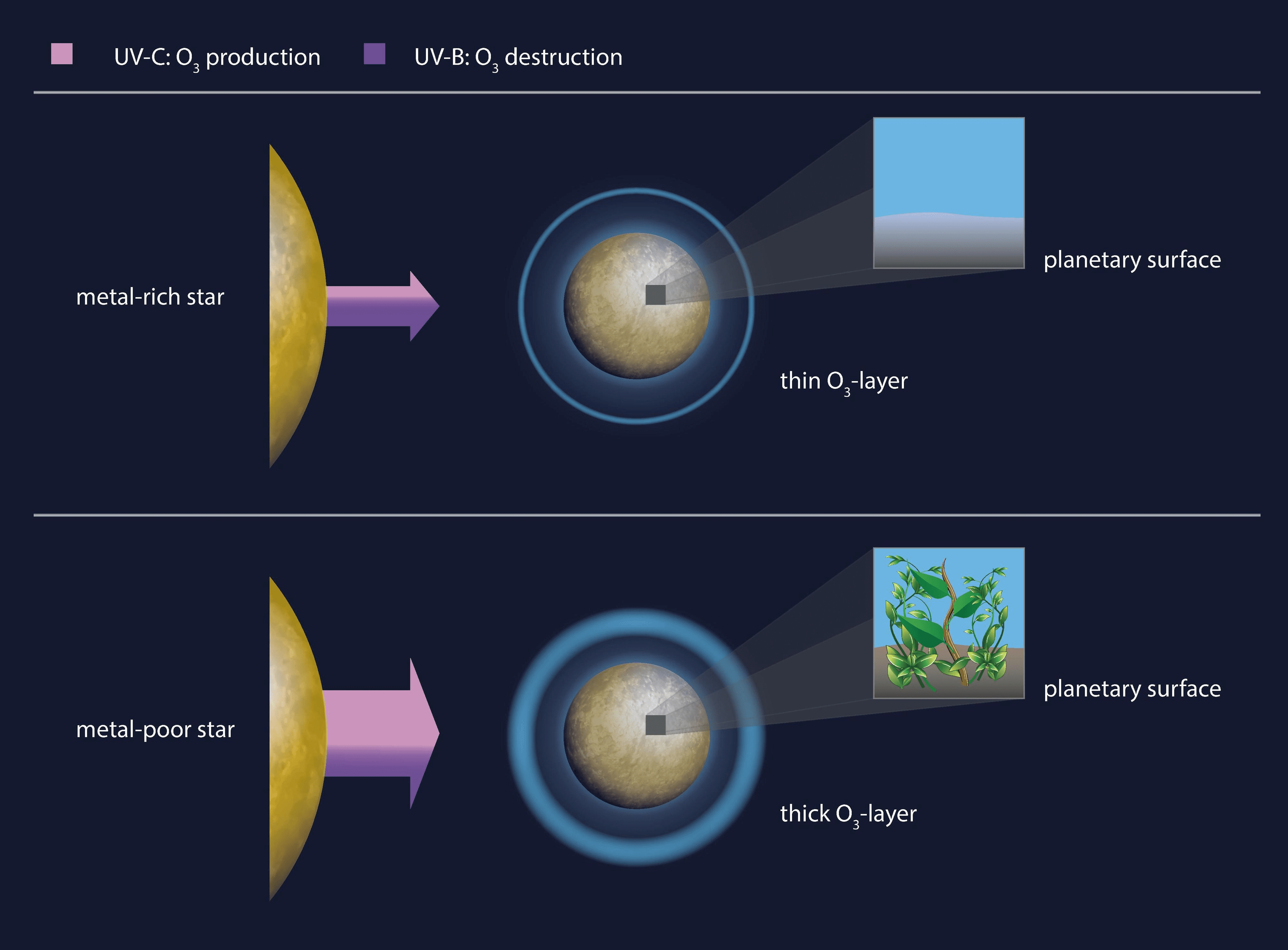The factors that make a star a suitable host for life on surrounding planets are complex, and new research indicates something we thought was an asset – high metal content – may instead be harmful. If so, it indicates we’ve been focusing our search for life-supporting planets in the wrong places. More worryingly, it means the prospects for life escaping the oceans may be in permanent decline.
The early universe consisted of only three elements: a lot of hydrogen, some helium, and a little lithium. The first stars were made entirely of these, producing other light elements as they lived, and heavier ones as they died. These deaths spread those elements, known to astronomers as metals even when chemists would not call them that, across galaxies to be incorporated into future generations of stars.
Consequently, metal abundance is considered among the most important stellar feature, with low-metal stars survivors from the early universe sought for that reason. Yet according to a new study, there is another reason to seek out (somewhat) metal-poor stars: their planets are more likely to have the necessary shielding that could allow life to flourish.
Very metal-poor stars have always been considered poor prospects to host life. If a star formed without metals, its planets probably did too, allowing only gas giants, rather than rocky worlds like Earth. More metals (which to astronomers include oxygen, carbon, and silicon) means more chance of a world like the one we call home. Consequently, while metal-poor stars are valued for cosmic archaeology, it’s those that are metal-rich that have been prioritized in the hunt for life.
Although the work offers a hint as to where efforts to find inhabited planets should be focused, it comes with a side of existential dread.
Yet Dr Anna Shapiro of the Max Planck Institute for Solar System Research and co-authors argue this misses a crucial point. Land life on Earth depends on the thin layer of ozone that prevents Earth from being sterilized by ultraviolet light.
“We wanted to understand what properties a star must have in order for its planets to form a protective ozone layer,” Shapiro said in a statement. The question was considered particularly important after a previous study found the brightness of many Sun-like stars varies more than the Sun’s does, which would make UV even more of a potential threat.
Metal-poor stars emit more UV radiation than their metal-rich counterparts, the authors found. This might lead one to assume they are less likely to have life around them, but there is a catch. Ultraviolet light covers a wide range of wavelengths, and ozone is formed in our atmosphere by UV-C light and destroyed by UV-B. The ratio is crucial and is much more favorable in metal-poor stars.

Metal-poor stars produce more UV radiation, but in a form that encourages ozone formation, and therefore protects from the dangerous wavelengths. Image Credit: MPS/hormesdesign.de
“Contrary to expectations, metal-poor stars should thus provide more favorable conditions for the emergence of life,” Shapiro concludes. It’s the opposite of the Midas touch. Life might begin in the oceans, which act as their own UV shield, on stars more metal-rich than the Sun, but establishing itself on land could be a beach too far.
Although the work offers a hint as to where efforts to find inhabited planets should be focused, it comes with a side of existential dread.
One explanation for the Fermi paradox has been that, until recently, the only stars in the galaxy metal-rich enough to have suitable planets were close to the center. Here, interactions between stars are so frequent that planets may be disrupted. Out in the safer reaches where we are based, perhaps the Sun is simply one of the first stars to be metal-rich enough to have a suitable planet.
This work, if it stands up to reanalysis, turns that on its head, and suggests it may become harder and harder for life to evolve as more planets get sterilized. If humanity destroys itself (perhaps by tampering with that precious ozone layer) chances for a reboot may be fading.
The study is published in Nature Communications.
Source Link: The Universe’s Best Days For Life May Be Behind It